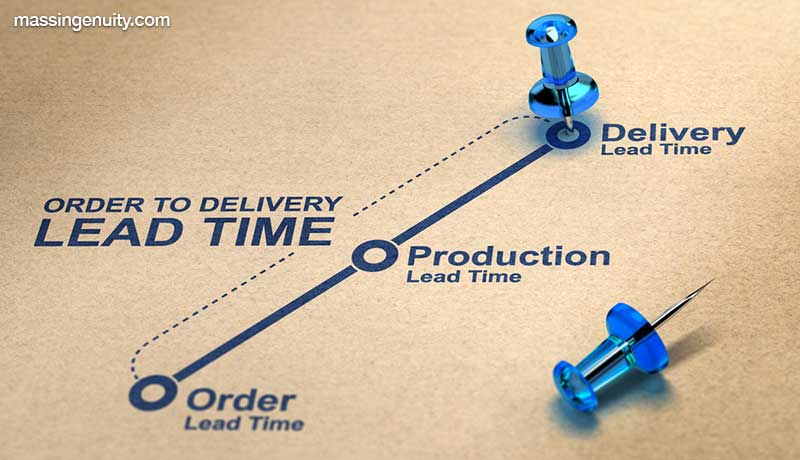Quality matters across a wide range of industries. But, without a standard, the definition of quality can vary from business to business. That’s why the Geneva-based International Standards Organization, better known as ISO, exists: to create a standard for all companies across all industries to live up to.
ISO 9000 standards are well-known and designed to help companies create quality management systems that fit into their daily operations. While ISO 9000 standards are meant to be flexible so that they can apply to different and unique situations, there are universal approaches all companies can use to achieve ISO 9000 compliance and to remain compliant over the long term.
Is your company looking to implement or better manage an ISO 9000 effort? Here’s a look at 4 ways your business can remain ISO 9000 compliant, with a heavy emphasis on developing the right processes and using enterprise performance software to track progress.
1. Develop Implementation Processes

Most companies are great at planning. Processes designed to support ISO 9000 compliance look amazing on whiteboards, within memos, and on slide decks.
But planning is the easy part. It’s the implementation process that really matters. How can your company translate something from a whiteboard into daily operations that promote quality?
To successfully make that translation, your company should consider focusing more on an implementation process than on planning. While all companies are unique, creating and launching an implementation process follows 3 general steps:
- Get Support From Management: Make sure your entire management team is on board with ISO 9000 compliance. If quality management is not a priority at the highest levels of the company, it will never be a priority for the frontline workers who have the most control over quality. Not all corporate programs trickle down from the top, but ISO 9000 implementation and ongoing compliance certainly do. You must make quality a part of your corporate culture to achieve success in this area.
- Create an Implementation Team: Your executive leadership team has too much to think and worry about to handle ISO 9000 implementation on its own. So, instead, create a task force of well-regarded team members from a cross-section of different departments to own the implementation of ISO 9000. It helps if task force members are familiar with or have experience with ISO 9000 standards and process implementation. It also helps if task force members are part of middle management with access to executive leadership — but not too far removed from being frontline workers themselves.
- Develop a Realistic ISO 9000 Plan: It’s also important that your task force team members have an understanding of what frontline workers do on a day-to-day basis and how their existing processes work. That collective understanding will allow the task force to develop a realistic plan for ISO 9000 implementation — one that sets up the company and its team members for success rather than failure. If an ISO 9000 implementation plan is unrealistic, it will be doomed before it ever launches.
Naturally, your company and its unique circumstances will create ISO 9000-related nuances that must be addressed. The 3 steps listed above are simply guidelines for getting the conversation started and moving toward implementation in a way that can be successful.
2. Create the Right Goals

An implementation process for ISO 9000 means nothing without the right goals. The processes put in place to implement, manage and track ISO 9000 compliance should move the company toward a meaningful business outcome.
The meaningful business outcome could be any of the following:
- Accelerated production times.
- Increased automation.
- Limited safety incidents and reports.
- Reduced scrap and other inefficiencies.
- Improved communication and teamwork.
Your company should be able to take any of the business outcomes listed above and tie them to firm numbers with deadlines. When your ISO 9000 implementation process leads to real wins for the business, buy-in across the organization increases — and your team members begin to see the purpose behind ISO 9000.
And, depending on the nature of your business, you may have more than one business outcome in mind. It’s normal to use ISO 9000 to pursue multiple business objectives. Just make sure that reaching multiple business objectives by specific deadlines is realistic. If ISO 9000-related goals are unreachable, they will only generate frustration among your team. A realistic approach increases your ability to get the entire company to believe and participate in ISO 9000 compliance.
3. Focus on Training

Of course, you’ll need training for ongoing ISO 9000 compliance, but the training may be trickier than you think.
Most of what your frontline workers do on a daily basis will not change.
The small adjustments to manufacturing or business processes that promote quality will be quite subtle — so subtle that your workers may think of them as unimportant. Training is your opportunity to point out the subtle differences in process and to make sure your employees understand just how important those subtle differences will be.
It’s not just frontline workers who will need training. It’s also a good idea to schedule ISO 9000 training for your management team and for ISO 9000 task force members. While your management team and task force members may be familiar with ISO 9000, a deep understanding is required to successfully implement processes that lead to compliance. You’ll likely need training from an external partner, like an ISO 9000 consultant or consultancy. The perspective of an individual or firm that is working every day on ISO 9000 implementation and compliance will be invaluable in helping your company avoid first-time mistakes and to maximize its push for compliance.
Think through other parties who are part of your company’s production process. They will need training, too. For example, in the manufacturing industry, you’ll need to get suppliers up to speed on your ISO 9000 efforts. Without their buy-in and participation, it will be difficult to implement ISO 9000 processes and to reach and maintain compliance.
Training may sound expensive at first read. But remember that you’re tying your ISO 9000 implementation and compliance to real business outcomes. If you can implement and manage ISO 9000 programs successfully, reaching your business goals should help pay for training and then some.
4. Keep Tabs on Progress

Your company will likely need enterprise performance software to track its progress toward ISO 9000 compliance.
Even after your business has achieved compliance, a regularly updated IT dashboard that includes key metrics can help your team stay compliant over the long term. Without the right software in place, effective enterprise performance management and ISO 9000 compliance becomes far more difficult.
Again, this is where goals and real business outcomes become important. Use these goals to help select the metrics that are most important for ISO 9000 compliance and success. When you choose the right goals and metrics, using enterprise performance software to keep tabs on progress becomes a simple endeavor.
Choosing the right software and other technologies is important beyond ISO 9000. Yes, new technologies introduce new expenses, and they can sometimes be difficult to evaluate and implement. But the right technologies can be a huge differentiator for your business — empowering it to grow and scale in a way that is impossible without technology. Embrace enterprise performance software and other technologies as the growth tools that they are.
Use Results Software to Track ISO 9000 Compliance
It’s not enough to choose the least expensive, most accessible enterprise performance management system to track your ISO 9000 compliance efforts. You need high-quality enterprise performance software that you can rely on to monitor your compliance efforts.
At Mass Ingenuity, our Results Software is trusted by companies around the world for enterprise performance management — including ISO 9000 implementation and compliance efforts. Without a solution like Results Software, companies are able to plan but unable to implement. Accountability is limited, and workers become frustrated by the lack of vision and progress. In short, taking a manual approach to compliance is a quick path to failure.
But, when you implement Results Software, you gain immediate visibility into your performance — ISO 9000 compliance included. You quickly find out what’s working and what’s not. Workers get immediate feedback and guidance. And your entire team is able to iterate and improve as it pushes toward compliance and related business outcomes. Results Software can make all the difference in your ISO 9000 success.
Are you ready for enterprise performance software that can guide your ISO 9000 efforts?
Jim Clark
Vice President of Professional Services

